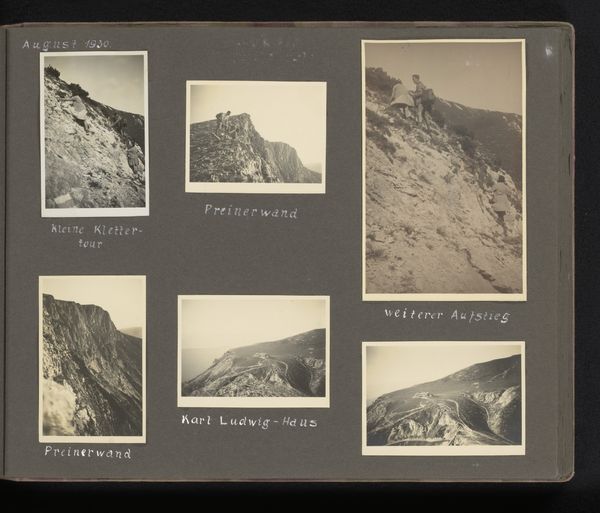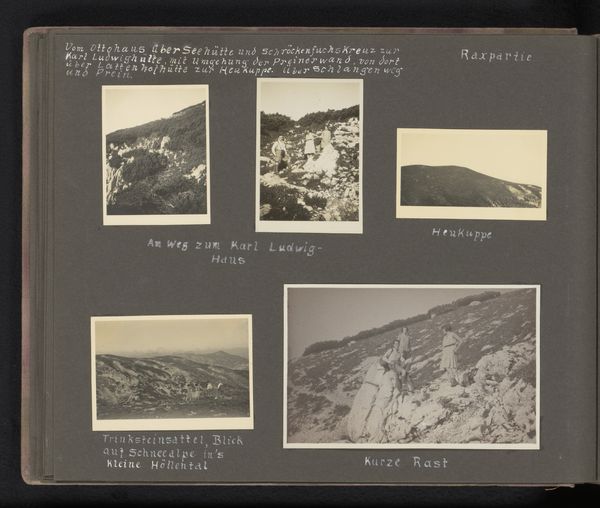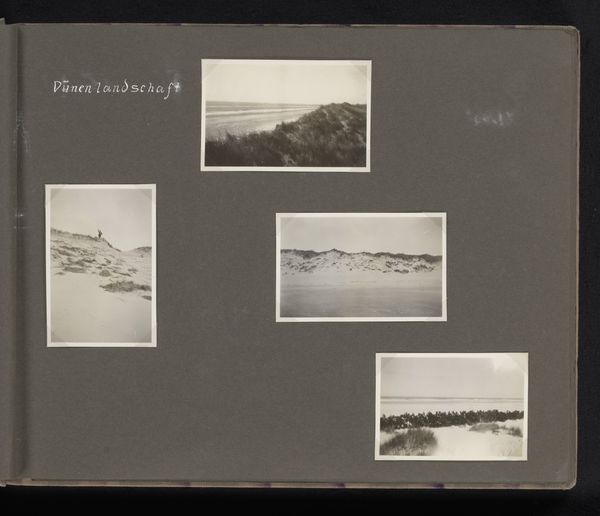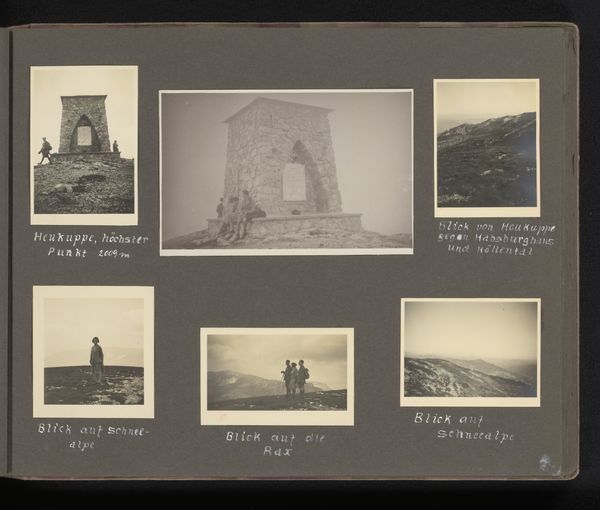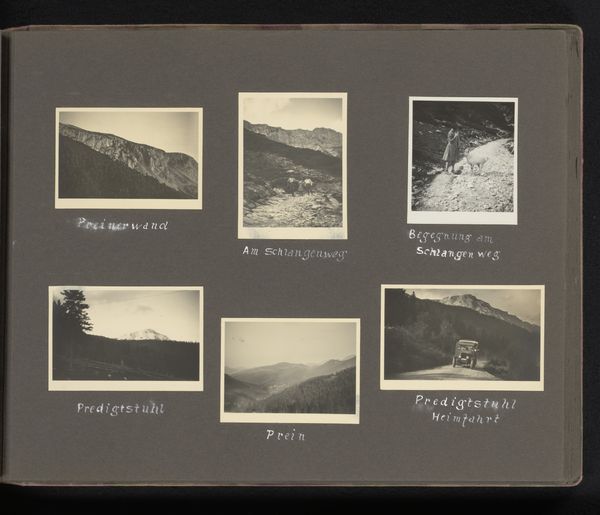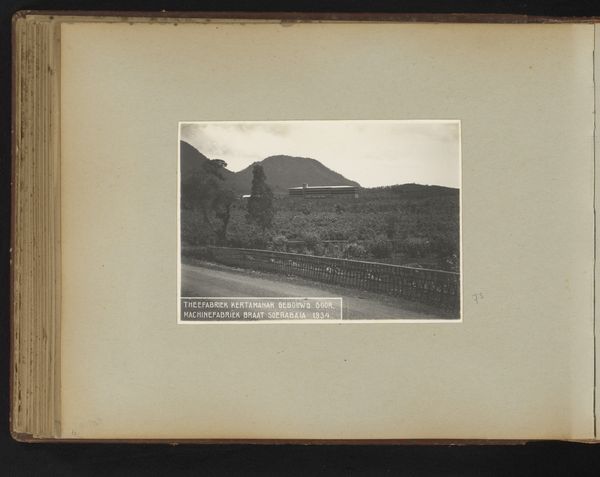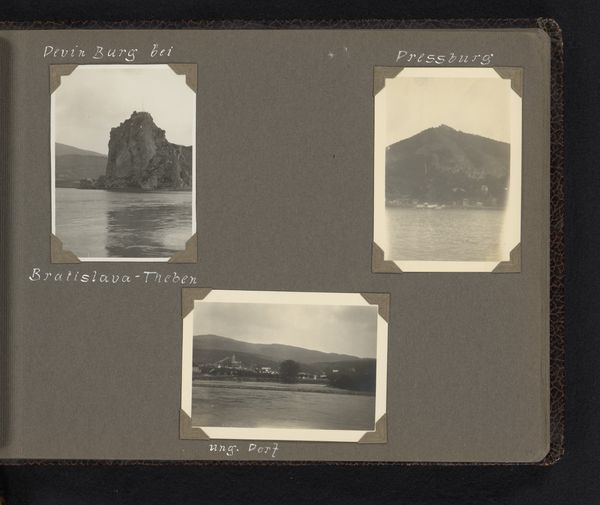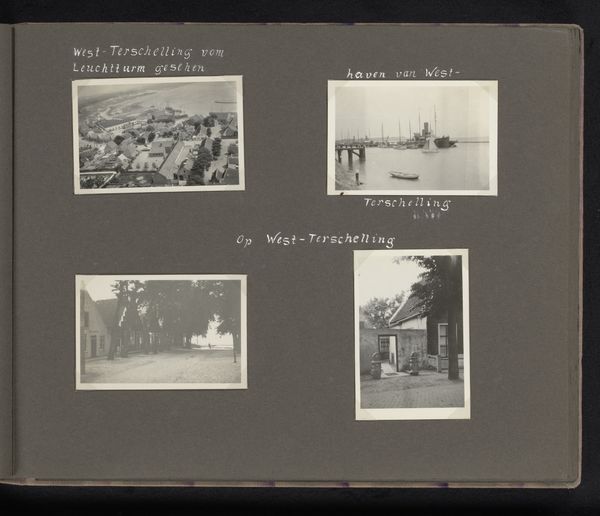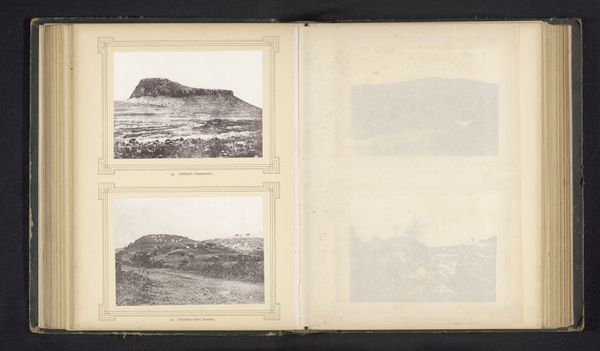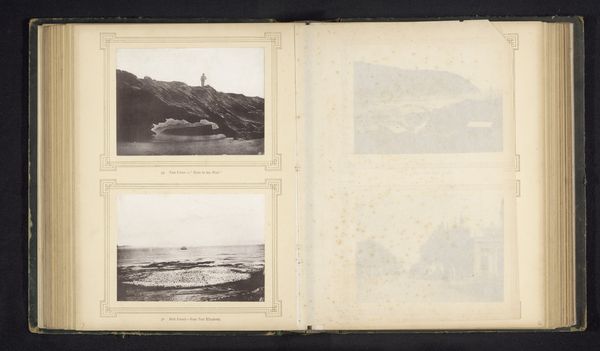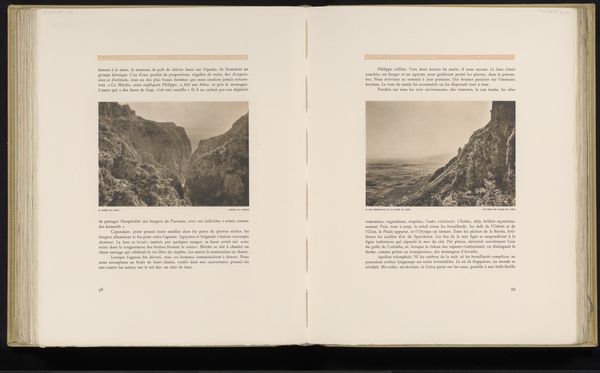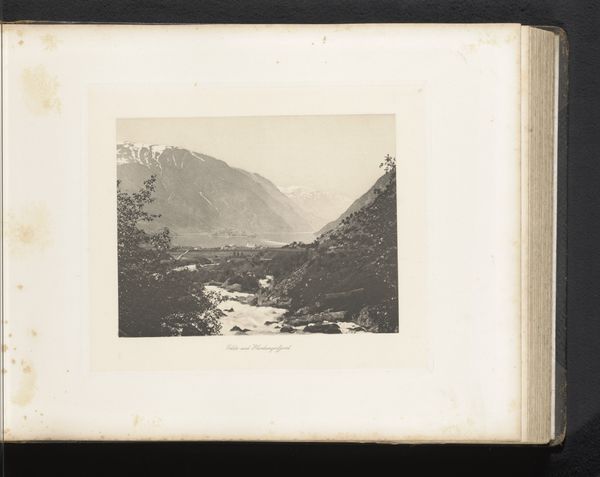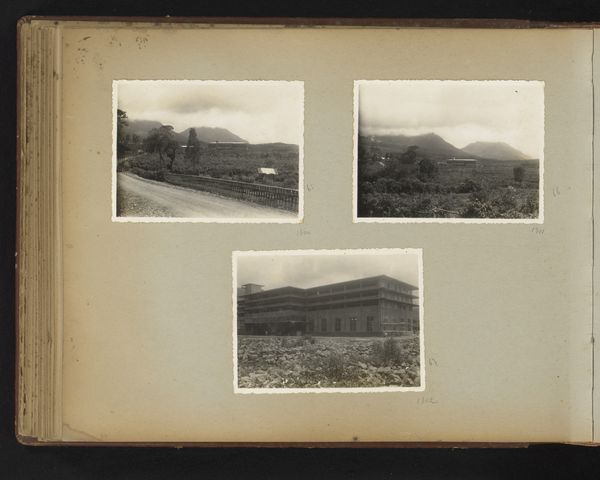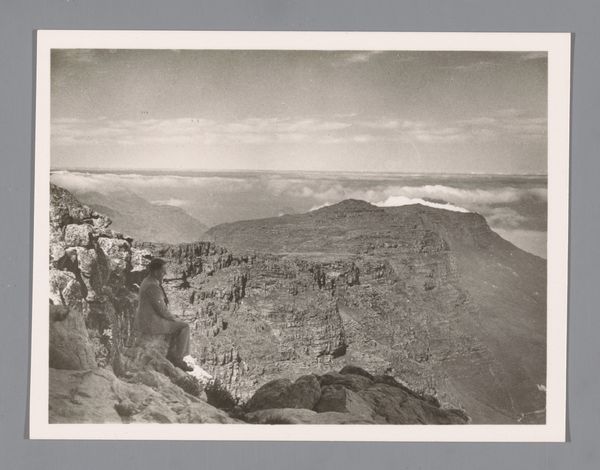
photography, albumen-print
#
landscape
#
photography
#
mountain
#
albumen-print
Dimensions: height 238 mm, width 290 mm
Copyright: Rijks Museum: Open Domain
Curator: This image, entitled "Trektocht in de Oostenrijkse Alpen," offers a window into a personal experience of landscape during the 1930s, created by Berti Hoppe. The piece appears to be an albumen print documenting alpine scenery. What strikes you initially about this arrangement of photographs? Editor: Immediately, I’m drawn to the somber, almost oppressive atmosphere. The monochrome palette certainly contributes, as does the stark composition featuring domineering rock formations. There’s a sense of human insignificance when confronted with such monolithic, natural forces. Curator: Absolutely. Consider the period: Pre-war Europe grappling with political upheaval and anxieties about the future. The mountains aren't simply landscapes here; they become symbolic backdrops for grappling with feelings of both the sublime and, perhaps, a looming dread. There's a subtle tension between the individual's exploration and the weight of external circumstances. Editor: That’s interesting. I see the potential for those interpretations, particularly within the broader sociopolitical context of interwar Germany. The very act of documenting and archiving, as Hoppe has done by pasting them into this dark album, takes on an active role, a need to exert some control over what cannot be grasped. Curator: These photographs invite us to examine the historical gaze—the selective focus on certain vistas while omitting others. Why capture these specific angles of the Preinerwand or the Bismarcksteig? Does this represent a specific type of masculine experience of the Alps, a striving for the sublime? How do the named places contribute to a sense of identity and belonging, especially in a period of political instability? Editor: And also the small hints of civilization, too: the Karl Ludwig Haus. A meeting place for people. We should also not forget that these images would have held a very different valence then from what they signify today. These personal photos were later donated to museums, turning them into something entirely different from personal documents. Curator: Right, these intimate images gain new meanings as they enter the public sphere. The albumen print as an artistic medium itself represents an interesting blend of the scientific and the aesthetic. How might Hoppe's understanding of photography itself have shaped the narrative she constructed in the album? Editor: It seems that a careful consideration of visual codes helps in interpreting not just art, but also the complex ways social and political identity were perceived by the generation between the two World Wars. Curator: Exactly. It urges us to consider the personal archive as more than mere documentation; it becomes a site of cultural encoding.
Comments
No comments
Be the first to comment and join the conversation on the ultimate creative platform.
